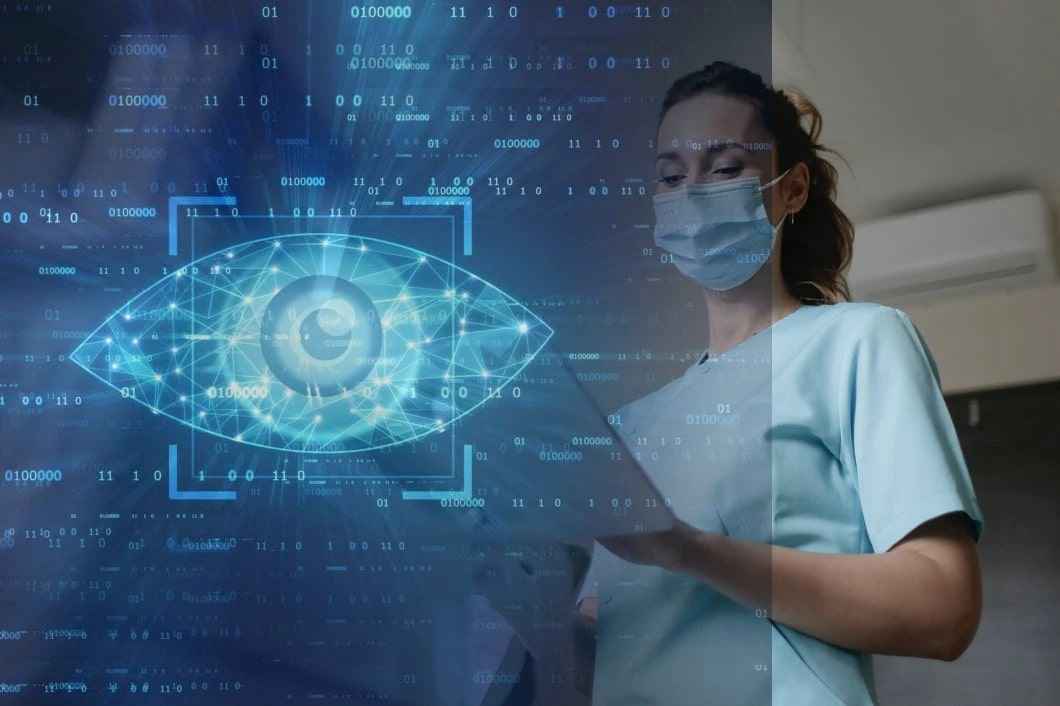
Computer
vision already now has a tremendous amount of real-world applications.
Healthcare is one of the fields where this technology is becoming particularly
relevant. The importance of computer vision technology in healthcare cannot be
overstated. Its techniques have shown great application in many medical
scenarios, such as medical imaging and surgical planning, and continue to gain
more widespread use.
In
this article, we are going to give an overview of some ways computer vision can
be used in the healthcare industry and the advantages that people should expect
from it.
What is computer vision in
healthcare?
Computer
vision is a relatively young AI technology that revolutionizes the way machines
and humans partner. It focuses on training intelligent computer algorithms to
understand and interpret visual data without being explicitly programmed in a
particular program or language.
As
long as we depend on our own senses exclusively, examining and diagnosing
diseases and health issues are the doctors’ responsibility. The results depend
on what their eyes, ears, and touch can detect. Perception is limited to how
the human eye and mind interpret reality.
Alternatively,
computer vision (CV) is what allows computers to see, analyze, and understand
visual data. And the more considerable the amount of data, the better computer
vision works. Researchers say image information accounts for about 90 percent
of all healthcare input data. It opens up a multitude of opportunities to train
computer vision algorithms to improve both patient care and the efficiency of
the healthcare industry as a whole. In other words, automation of processes
relying on image recognition can increase the quality of care while reducing
the need for human input to complete tasks. This is an overarching priority as
it will allow medical staff to focus on more complex problems. Much work has
been done to extend human capabilities with visual analytics. But even more is
to come.
Advantages of using computer vision in the healthcare
industry
Computer vision can efficiently support any medical task that needs a trained eye to discern and classify a health problem. This AI-backed technology uses advanced algorithms to assist image processing and reads it in real time, identifying specific signs of illness. The proper use of computer vision in medicine will help reduce the time spent on unnecessary diagnostic procedures and provide the healthcare professional with the means to make more accurate diagnoses and order more effective treatments. To date, computer vision has advanced to the point where it can cover a broad range of tasks and help people perform quite a number of medical activities. In turn, these developments have brought about a variety of advantages that an ever-growing number of specialists can gain and enjoy.
1. A more accurate meter. Computer vision in healthcare applications
results in faster and more accurate diagnoses. And the more data the system
receives for algorithm training, the higher the accuracy rates. For example, a
study by the Santa Clara Valley Medical Center showed that a computer-based
algorithmic system could predict blood loss during cesarean deliveries more
accurately than other methods. This means neural network algorithms can be
trained to recognize elements with greater precision than doctors do and
identify patterns that may be otherwise missed by the human eye. Other
instances of improved accuracy are being seen with X-rays, ultrasound, CT
scans, and MRI.
2. Early disease recognition. There are a number of diseases that answer to medical treatment only in the early stages. Computer vision technology allows recognizing symptoms when they are not yet apparent and enables doctors to intervene early. This makes a huge difference in treating patients that would not otherwise get the help they need. By recognizing early-onset illnesses, doctors can prescribe drugs to help fight those diseases or even perform surgeries earlier and save lives. The aim here is to accelerate the speed of the diagnosis process through computer vision employment and make treatment more successful.
3.
Enhanced medical procedures
efficiency. Computer vision is known not only for diagnostic accuracy but also
for being generally efficient for patients and healthcare professionals alike.
In particular, computer-aided diagnoses minimize doctor and patient
interaction. This reduction is especially of benefit in light of the physician
shortage projections. The United States, for example, is expected to face a
shortage of up to 121,900 physicians by 2032. In turn, the use of computer
vision on digital images offers potential for rationalizing the team's workflow
and the subsequent cost optimization. Advanced AI algorithms do the bulk of the
heavy lifting, allowing the specialist to focus on relationship building,
information elicitation, counseling, and management.
4.
Automatic generation of medical
reports. The progress in computer vision evolution has enabled extensive use of
medical imaging data for more accurate diagnosis, treatment, and prediction of
diseases. By using computer vision techniques, healthcare professionals can
acquire enhanced medical information that is not only interpreted to establish
a diagnosis and prescribe medication but can also be used for disease
prediction and analysis report generation. Healthcare specialists can leverage
the power of computer vision to automate the medical report generation. Feeding
data from X-rays, ultrasound, CT scans, and MRI to computer vision algorithms,
clinicians will be able to gain in-depth insight into an individual's physical
condition, predict when a disease will develop, and when appropriate treatment
will be needed.
5.
Interactive medical imaging.
Computer vision for medical imaging allows 3D visualization in an interactive
and detailed way. Medical image analysis has been significantly benefitting
from the application of deep learning techniques over the past years. These
developments paved the way for computer vision to become more effective in
healthcare image processing. Now, deep learning and computer vision can be used
to perform a visual analysis of interactive 3D models to make more accurate
medical diagnoses. 3D models are a more informative format than traditional 2D
images. Thus, for example, 3D breast imaging driven by advanced computer vision
systems proves more effective for cancer prevention in the early stages of
disease progression.















